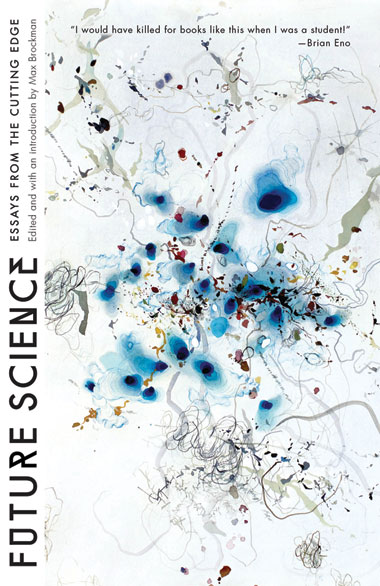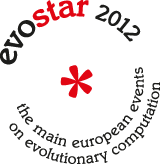Monday, October 31, 2011
Do Jumping Genes Spawn Diversity?
The data are clear. Transposable elements move in developing brain cells. But the question remains: Does the brain tolerate them or take advantage of them? Full article @ Science


Nice bacteria finish last - The Scientist - Magazine of the Life Sciences
Nice bacteria finish last - The Scientist - Magazine of the Life Sciences
Altruism is alive and well in bacterial populations, according to new research in Nature, which found that a few altruistic bacteria help their neighbors withstand the assaults of antibiotics, even at a cost to themselves.Researchers from Boston University found that a minority of resistant bacteria help their susceptible neighbors survive by producing and sharing high amounts of the signaling molecule indole, which guards cells against oxidative stress and helps them flush out the antibiotic. But by doing so, they have fewer resources left for their own growth.
Read more: Nice bacteria finish last - The Scientist - Magazine of the Life Sciences
H.L. Lee, et al., "Bacterial charity work leads to population-wide resistance," Nature, 467:82-6, 2010.

Altruism is alive and well in bacterial populations, according to new research in Nature, which found that a few altruistic bacteria help their neighbors withstand the assaults of antibiotics, even at a cost to themselves.Researchers from Boston University found that a minority of resistant bacteria help their susceptible neighbors survive by producing and sharing high amounts of the signaling molecule indole, which guards cells against oxidative stress and helps them flush out the antibiotic. But by doing so, they have fewer resources left for their own growth.
Read more: Nice bacteria finish last - The Scientist - Magazine of the Life Sciences
H.L. Lee, et al., "Bacterial charity work leads to population-wide resistance," Nature, 467:82-6, 2010.

How Fast-Folding Proteins Fold
"Results of atomic-level molecular dynamics simulations, over periods ranging between 100 μs and 1 ms, that reveal a set of common principles underlying the folding of 12 structurally diverse proteins. In simulations conducted with a single physics-based energy function, the proteins, representing all three major structural classes, spontaneously and repeatedly fold to their experimentally determined native structures." Full article @ Science
Kresten Lindorff-Larsen, Stefano Piana, Ron O. Dror, and David E. Shaw [2011]. "How Fast-Folding Proteins Fold". Science. 334 (6055): 517-520.

Kresten Lindorff-Larsen, Stefano Piana, Ron O. Dror, and David E. Shaw [2011]. "How Fast-Folding Proteins Fold". Science. 334 (6055): 517-520.

Friday, October 21, 2011
Beyond Nature vs. Nurture
"Researchers studying differences in how individuals respond to stress are finding that genes are malleable and environments can be deterministic. [...] We’ve reached a point where most people are savvy enough to know that the correct response isn’t “nature” or “nurture,” but some combination of the two. Yet scientists and laymen alike still spend too much time and effort trying to quantify the relative importance of nature and nurture.[...] The mind/body divide is disappearing, too, as we discover that mental phenomena have physical correlates, an understanding of which can help us develop new approaches for research, teaching, and policy related to stress and health. While this integrative view of stress probably seems obvious to the average thinking person, it’s taken basic scientists fifty years to reach the same conclusion. The false dichotomy of nature vs. nurture is quickly eroding, and the modern era of stress research makes a compelling case for the study of the dynamic interplay between our genomes and our experiences." Full article @ The Scientist


Wednesday, October 19, 2011
Richard Resnick: Welcome to the genomic revolution | Video on TED.com
Plant RNAs Found in Mammals
MicroRNAs from plants accumulate in mammalian blood and tissues, where they can regulate gene expression. Full news report @ The Scientist


Self-Replication Process Holds Promise for Production of New Materials
ew York University scientists have developed artificial structures that can self-replicate, a process that has the potential to yield new types of materials. See full article @ Science daily


From Telomeres to the Origins of Life
The Interesting career of Nobelist Jack Szostak and how he shifted his focus from telomeres to the origins of life.


Wednesday, October 12, 2011
Origins Symposium 2011
Origins Symposium 2011 sponsored by the Stone Age Institute. Sunday, October 23rd, 2011, 9:00 AM - 5:00 PM, Whittenberger Auditorium Indiana, Memorial Union, Indiana University, Bloomington. Admission is FREE and all are welcome


Christoph Adami: Finding life we can't imagine | Video on TED.com
Contributed by Brett Pfingston:
How do we search for alien life if it's nothing like the life that we know? At TEDxUIUC Christoph Adami shows how he uses his research into artificial life -- self-replicating computer programs -- to find a signature, a 'biomarker,' that is free of our preconceptions of what life is. Christoph Adami: Finding life we can't imagine | Video on TED.com
Sunday, October 02, 2011
Evo*
evo* comprises the premier co-located conferences in the field of Evolutionary Computing: eurogp, evocop, evobio, evomusart and evoapplications. Featuring the latest in theoretical and applied research, evo* topics include recent genetic programming challenges, evolutionary and other meta-heuristic approaches for combinatorial optimization, evolutionary algorithms, machine learning and data mining techniques in the biosciences, in numerical optimization, in music and art domains, in image analysis and signal processing, in hardware optimization and in a wide range of applications to scientific, industrial, financial and other real-world problems. See www.evostar.org


